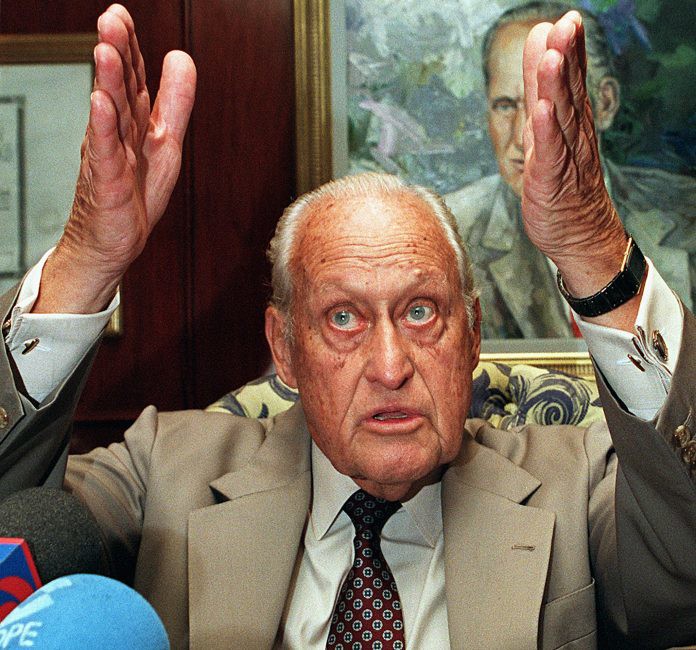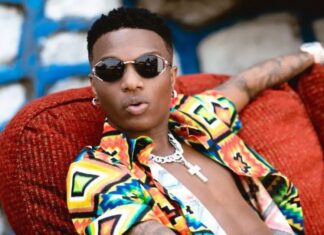The death of former Federation Internationale de Football Association (FIFA president, Joao Havelange on Tuesday, August 16 was a big blow not only to the football fraternity but to sports in general.
The Brazilian who was the seventh president of the world football governing body from 1974 to 1998, died at the age of 100 years.
Soccer’s world governing body, known by the acronym FIFA, after its French name, confirmed his death, at Samaritano Hospital in Rio. He had been hospitalised several times in recent years and was treated for pneumonia last month.
His reputation may have been in tatters in his later years, but the stadium in Rio for the track and field events at the 2016 Summer Olympics, built in 2007, was formally named Jao Havelange Olympic Stadium. Organising officials for the Games decided, however, to refer to it simply as “the Olympic Stadium.”
Havelange invariably had the last word within FIFA, even when it did not have to be uttered. That was the case in 1995 when he was criticized for visiting Nigeria at the same time that a prominent Nigerian, Ken Saro-Wiwa, was about to be executed.
“I don’t want to make any comparisons with the pope, but he is also criticized from time to time, and his reply is silence,” he was quoted as saying.
“I am, too, sometimes criticised, so explanations about such matters are superfluous.”
Among his last achievements was to use his clout to help Rio win its bid to host this year’s Olympic Games – the first held in South America.
He would be remembered by so many people for so many things as he was so many things to so many people while in active service.
He neither drank nor smoked and met with Pope John Paul II on no less than three occasions.
He was a Brazilian lawyer, businessman, and former athlete. He was an International Olympic Committee (IOC) member from 1963 until 2011, resigning because of ill health. He represented Brazil in swimming at the 1936 Olympics – the year he qualified as a lawyer – before his election to the IOC.
His tenure as FIFA President is the second longest in FIFA’s history, behind only that of Jules Rimet. He received the title of Honorary President when leaving office, but resigned in April 2013.
He succeeded Stanley Rous and was succeeded by Sepp Blatter. He became the first (and, to date, only) non-European to hold the post. He lobbied in 86 different countries for the presidency, often accompanied by Pele. Sports marketer, Patrick Nally said that “Havelange had seen the future…he knew that if he became the president of the only federation already running its own high-profile world championship then he would enjoy huge economic power”.
His successor, Sepp Blatter had this to say about Havelange: “He had one idea in his head, to make football a global game with his slogan ‘football is the universal language’, and he succeeded.
Former United States secretary of state, Henry Kissinger said of Havelange: “He sees the world through a telescope and not through a microscope”.
He served as a member of the International Olympic Committee (IOC) from 1963 to 2011. He was the longest-serving active member upon his resignation.
In July 2012 a Swiss prosecutor’s report revealed that, during his tenure on FIFA’s Executive Committee, he and his son-in-law, Ricardo Teixeira took more than $41 million in bribes in connection with the award of World Cup marketing rights.
His resignation from the IOC five years ago avoided an investigation into the ISL allegations, which he had denied.
On swimming at the 1936 Olympics, Havelange was part of the Brazilian water polo team at the 1952 Helsinki Games and was chef de mission for the Brazilian delegation at the 1956 Olympics in Melbourne.
And it was as a sports administrator, particularly in football, that Havelange made his mark.
As President of the Metropolitan Swimming Federation in Brazil, Havelange became a member of the Brazilian Olympic Committee and joined the Union Cycliste Internationale in 1958. After becoming Vice-President of the Brazilian Sports Confederation, he served as President of the Confederation from 1958 to 1973.
Appealing to developing nations, Havelange promised an expanded World Cup, and a youth World Cup that they might be able to host.
Threatened by Havelange’s international campaign for the presidency, Rous asked Horst Dassler, then managing Adidas’ French subsidiary to help his campaign.
Dassler engaged in intense lobbying of the delegates at the 39th FIFA Congress, where the vote was to be held. The election went to a second round, and Havelange won by sixteen votes.
He did not have sufficient money to fund his programme for FIFA, so he sought financial support from Dassler, who wished to supply Adidas branded equipment to the national federations. Supported by sports marketer Patrick Nally, Havelange enlisted Adidas and Coca-Cola as primary sponsors of FIFA tournaments. The two companies also underwrote the expenses of FIFA tournaments, with Coca-Cola underwriting the 1978 FIFA World Cup in Argentina for $8 million.
The support of commercial organisations was crucial to the future of Havelange and FIFA, and provided a model for global sporting federations. Nally stated that “The money we brought into FIFA through Coke was clearly changing the face of the federation. Havelange was building a new international headquarters in Zurich, appointing professional full-time staff and PR and finance people. FIFA was showing the way. Other federations were watching closely. Many others were eager to follow and quick to fall into the hands of Horst and myself”. The triumvirate of Jao Havelange, Horst Dassler and Patrick Nally would have profound effects on the future of world sport.
The sale of television rights increased greatly under his leadership. In 1987 the European rights to the next three FIFA World Cups were sold for $440 million, the non-United States rights for the three tournaments from 1998 sold for $2.2 billion.
When he was elected president, FIFA’s Zurich headquarters housed just 12 staff members. But that figure increased almost tenfold over the next two decades as FIFA’s organisational responsibilities and commercial interests grew.
Under his presidency the FIFA World Cup expanded from 16 to 32 teams, with Havelange overseeing six World Cups during his time in office.
Increasing the size of the World Cup to 32 teams gave countries from Asia, Oceania and Africa the chance to shine on the world stage, Cameroon becoming the first African country to reach the quarterfinals in 1990.
The FIFA Under-17 World Cup, FIFA Under-20 World Cup, FIFA Confederations Cup and FIFA Women’s World Cup were all introduced under his tenure.

- Advertisement -
- Advertisement -
Must Read
BBNaija stars, Doyin, Tacha slam Wizkid after shading Don Jazzy
Doyin while chastising the 'Ojuelegba' crooner, told him to stop chasing clout on social media and focus on releasing songs










